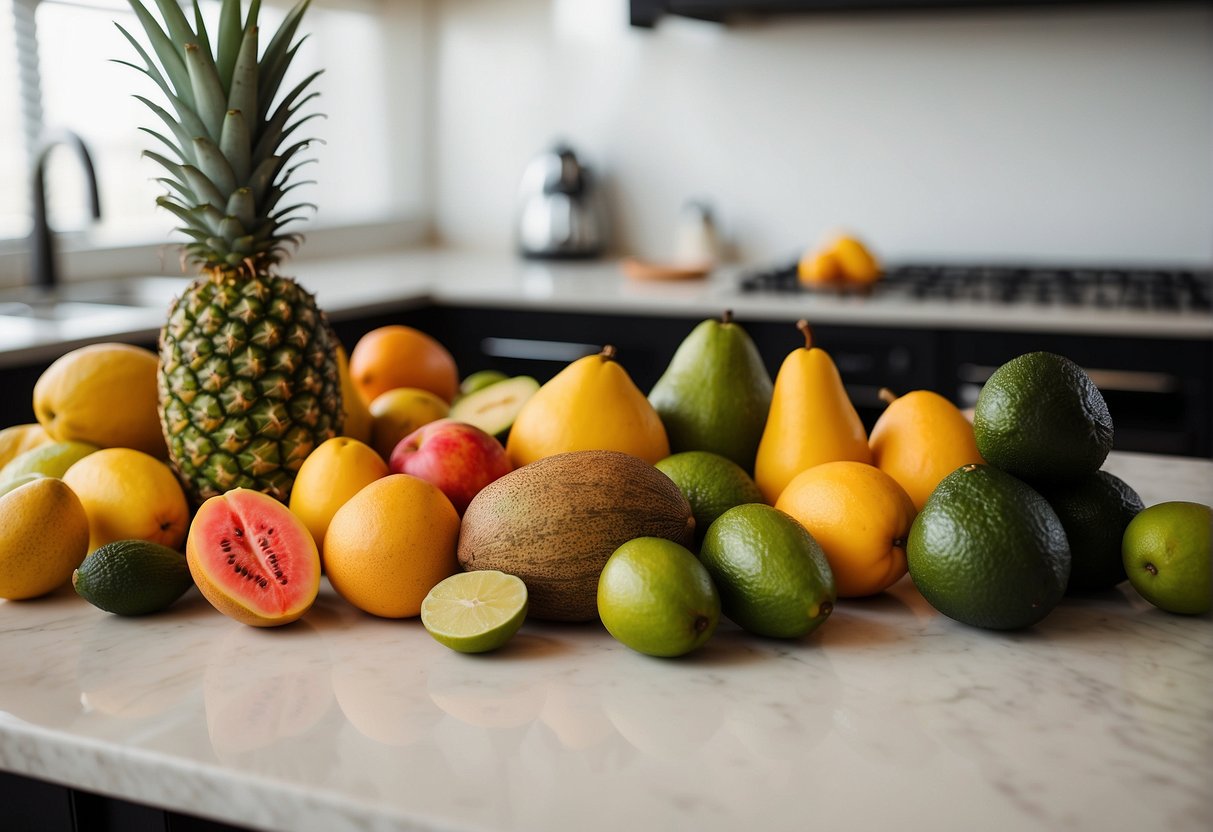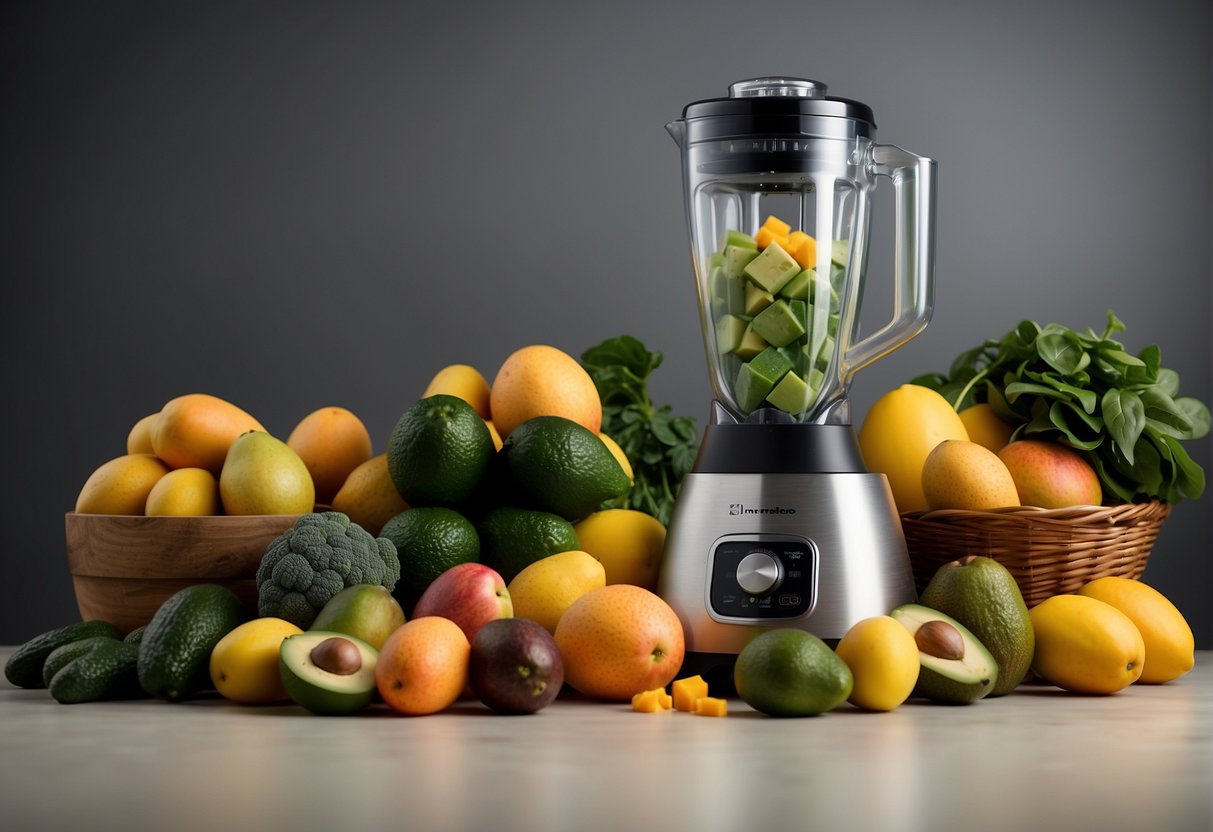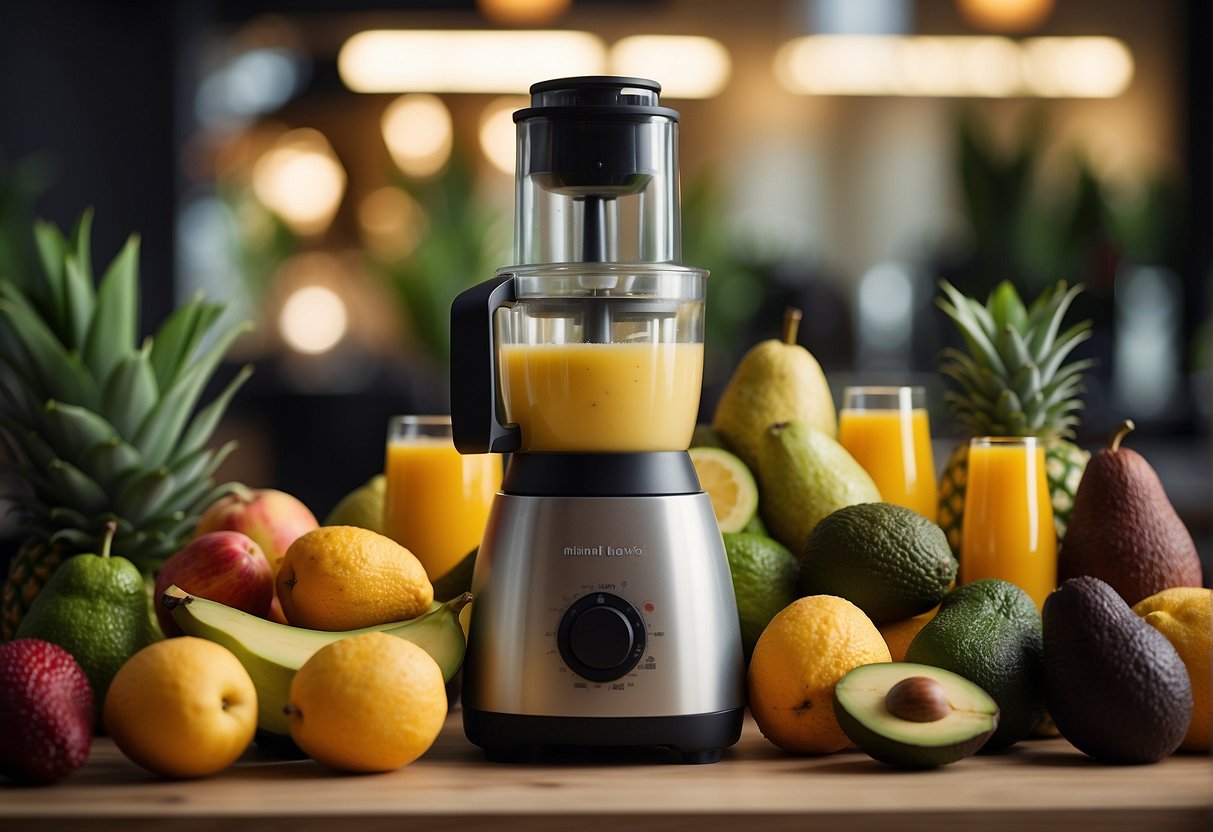Why Use Banana Substitutes in Smoothies?
Sometimes I just need to mix things up in my smoothies, or maybe you’re allergic to bananas, or have dietary restrictions that make the typical banana-based smoothie a no-go. Here’s why I like to use banana substitutes:
- Allergies: Not everyone can enjoy bananas due to allergies. If that’s you, finding a substitute is essential.
- Flavor Variety: Maybe you’re not a fan of the taste. Using a different fruit can completely transform the flavor profile.
- Healthy Fats: For a nutritional twist, I might add substitutes like avocado that are packed with healthy fats.
- Dietary Needs: If you’re looking to reduce sugar or carbs, or if you’re following a low-FODMAP diet, alternatives can help.
Here are banana subs that I’ve found work like a charm:
- Mango: It provides a creamy texture much like bananas and works great for those who want a tropical kick.
- Avocado: While it may sound odd, avocados blend up creamy and smooth, plus they’re full of healthy fats and make the smoothie filling.
- Silken Tofu: For my vegan friends, this is a gem. It adds creaminess without overpowering other flavors.
- Cooked Sweet Potato: Oddly enough, it makes for a sweet, thick consistency.
I’ve found that these substitutes don’t just mimic the texture; they offer new flavors and health benefits that a banana might not bring to the table. So whether you’re dodging bananas for personal taste, health reasons, or dietary restrictions, these alternatives could be just what you need.
Perfect Fruit Alternatives

When I’m looking to mix up my smoothie routine without bananas, I turn to these fruit alternatives. They’re loaded with natural sweetness and essential vitamins, making them perfect for a delicious and nutritious blend.
Mango Magic
Mangos add a sweet flavor and creamy texture to smoothies, much like bananas do. I often use frozen mango because it provides that smooth, thick consistency we all love. Plus, mangos are a fabulous source of vitamin C which is great for the immune system.
Berry Bonanza
Berries, including blueberries and strawberries, are my go-to for a berry blast in smoothies. They bring natural sweetness and are packed with antioxidants and vitamin C. Here’s a quick list to remember:
- Blueberries: A burst of sweet and tangy flavor.
- Strawberries: Adds a refreshing twist and depth of flavor.
Stone Fruit Swaps
Don’t overlook stone fruits like peaches for your smoothie. They add a sweet nectarine flavor and plenty of vitamins. The fibrous nature of stone fruits also helps create a satisfyingly thick texture in your drink.
Refreshing Citrus & Pineapple
Citrus fruits and pineapple can bring a zesty kick and a ton of vitamin C to any smoothie. The tangy taste of citrus and the tropical sweetness of pineapple make for a refreshing blend that’s also an immune system booster.
Exotic Picks: Papaya and Kiwi
For something a bit different, I toss in papaya or kiwi. These exotic fruits offer a unique taste and an impressive array of vitamins. Papaya’s mild sweetness combines well with other fruits, while kiwi adds a bright note and an extra dose of vitamin C.
Vegetable-Based Substitutes

I’ve found that veggies can be total game-changers in smoothies when it comes to adding creaminess and nutritional value without altering the taste too much. Here, I’ll introduce you to some veggie substitutes that pack in all the good stuff like dietary fiber, vitamins, and that sought-after creamy texture.
Creamy Avocado
My go-to vegetable for smoothies is avocado because it’s chock-full of healthy fats, fiber, and potassium. Just half an avocado can significantly boost the creaminess of your smoothie, making it a great banana alternative. Plus, it’s incredibly versatile, pairing well with both sweet and savory flavors.
Subtle Sweet Potato
Sweet potatoes are my little secret for a subtly sweet, creamy addition to smoothies. They’re brimming with fiber, vitamins, and a delightful natural sweetness. Cook and chill them before tossing into your blender to maintain a smooth consistency and to make sure you’re getting all their wholesome goodness.
Sneaky Zucchini & Cauliflower
Don’t knock it till you try it: zucchini and cauliflower can be sneakily good in smoothies. When I use riced cauliflower, it’s practically undetectable but ramps up the soluble fiber content which is great for gut health. Zucchini is similarly mild and contributes an extra dose of fiber without taking over the taste.
Pumpkin Pleasure
Lastly, I can’t forget pumpkin—it’s not just for pies! A scoop of canned pumpkin is low in calories but high in fiber and vitamin A. It gives a luxurious creaminess and earthy flavor to fall-themed smoothies, which makes it a seasonal favorite of mine.
Nut and Seed Enhancers
When I’m blending up a smoothie, nuts and seeds are my go-to for adding that extra punch of protein and healthy fats. These tiny additions can transform the texture and boost the nutritional value, making your smoothie a more fulfilling treat.
Chia Seed Delight
I find that chia seeds are little powerhouses. Just a tablespoon can infuse my smoothies with a good amount of fiber and omega-3 fatty acids. I just let them soak a bit in liquid to gel up, which gives a delightful thickness to the smoothie.
Cashew Creaminess
Cashews, especially when they’ve been soaked, contribute a certain creamy texture that I adore in smoothies. They’re like a secret ingredient for that silky mouthfeel without the banana. Plus, they add a nice boost of heart-healthy fats.
Almond Joy
Instead of using regular milk, I sometimes pour in almond milk for a nuttier flavor and to keep things plant-based. The joy of almonds doesn’t stop at milk, though – a scoop of almond butter adds both protein and healthy fats, making my smoothie all the more satisfying.
Nut Butter Boost
Speaking of nut butter, it’s an easy win in the protein department. Whether it’s almond, cashew, or any other nut butter, it brings magnesium and protein to your smoothie while delivering a rich taste.
Flax Seed Finesse
Lastly, flax seeds are my final touch for texture. Ground flax seeds mix in well without altering the flavor too much, giving me that essential fiber and also a dose of omega-3 fatty acids, which are great for my overall health.
Dairy and Non-Dairy Additions
When I make smoothies, I love experimenting with different ingredients that can add creaminess and nutritional value. Whether you prefer dairy or dairy-free options, here are some top choices to enhance your smoothies.
Greek Yogurt Glory
Greek yogurt is my go-to for a protein-packed smoothie. It’s rich in calcium and probiotics, which are great for my digestive health. Plus, it adds that perfect thick texture I crave.
Cozy Coconut Cream
I use coconut cream for its lush creaminess and the subtle tropical flavor it imparts. It’s a dairy-free delight, loaded with monounsaturated fats that can help maintain healthy blood pressure.
Silken Tofu Twist
Silken tofu is my secret weapon for a low in sugar, high-protein, and calcium-enriched smoothie. Its smooth texture is ideal for anyone looking for a dairy-free option that doesn’t skimp on creaminess.
Cottage Cheese Chunkiness
Don’t knock it till you try it—cottage cheese adds a lovely chunkiness and boasts plenty of protein and calcium. I find it mixes seamlessly into my smoothie, giving it a rich texture.
Oatmeal Thickness
For a fiber boost, I’ll toss in a handful of rolled oats. Besides contributing to a thicker consistency, oats have the bonus of being good for my heart.
Non-Dairy Milk Variants
When I’m out of my usual milk, I’ll opt for soy or almond milk. They’re both fantastic dairy-free options that offer a smooth texture and a hint of sweetness without overpowering other flavors.
Quinoa Quirk
And for a little unexpected twist, I like adding cooked quinoa to my smoothies. It’s not just for savory meals; quinoa packs in protein, fiber, and magnesium, and gives my drink an intriguing texture that I absolutely enjoy.
Specialty Smoothie Ingredients

When I’m blending up a smoothie, I like to think beyond fruits and veggies to include ingredients that pack a serious nutritional punch. From superfoods to natural sweeteners, these ingredients don’t just add flavor; they’re game-changers for health and energy.
Superfood Spotlight
In my superfood smoothies, I toss in a handful of goji berries or a scoop of spirulina for a burst of antioxidants and vitamin C. These aren’t just trendy buzzwords; they’re immune-boosting powerhouses that give my green smoothie an extra health kick.
Protein Power Powders
After a workout, I really need my smoothie to work as hard as I did. That’s why I shake in some protein powder. It’s perfect for muscle development and workout recovery. Plus, it keeps me full for longer, which is a huge plus!
Beans and Legumes
Now, before you knock it, hear me out—adding beans or legumes can boost both protein and fiber content. I’ve found that white beans are especially mild and blend right in, so you won’t even know they’re there.
Squash and Pumpkin
Butternut squash and pumpkin aren’t just for pies—they’re smoothie superstars. Besides the creaminess they offer, they’re also amazingly high in fiber and vitamin A. A scoop of mashed butternut or pumpkin really takes my smoothies to the next level.
Natural Sweeteners
Why go for processed sugars when natural sweetness does the trick? I’m all about a drizzle of honey or maple syrup in my blends. They’re not just sweeteners, they come with their own nutrients and subtle flavors that make any smoothie feel like a treat.
Tropical Treat: Piña Colada Mix-Ins
Whenever I’m dreaming of the beach, piña colada mix-ins like pineapple and coconut cream are my go-to. They’re not just for flavor—pineapple is high in vitamin C and enzymes, while coconut cream adds richness and a healthy dose of good fats.
Creating a Balanced Smoothie

When I’m crafting the perfect smoothie, my goal is to blend a mix of flavors and textures that are both tantalizing to the taste buds and beneficial for my body. It’s not just about replacing bananas; it’s about creating a deliciously harmonious and healthful drink.
Combining Flavors and Textures
I find that getting the balance right between sweetness and texture is crucial. For that creamy texture bananas usually provide, I often use avocado as a smooth and rich base. If I’m after sweetness with a bit more zing, I’ll toss in some frozen mango; not only does it make the smoothie thick, but it’s also a great way to perk up the flavor profile.
Nutrition and Health Benefits
A good smoothie is more than just a treat; it’s a health booster. I pack mine with ingredients high in dietary fiber, like chia seeds, for digestive health. To support my immune system and promote heart health, I sprinkle in foods loaded with vitamin C and soluble fiber. Think berries or a handful of dark leafy greens for a nutrition-packed punch.
Weight Loss and Dietary Considerations
I prioritize ingredients that are low in sugar and high in fiber when I’m aiming for weight loss or managing my dietary needs. These ingredients keep hunger at bay and provide steady energy. I’ll add a scoop of protein powder or a bit of oatmeal to round out the smoothie, making sure it aligns with my dietary goals yet still tastes great.
Frequently Asked Questions

In exploring smoothie recipes, I’ve come across some really interesting alternatives to bananas that can change up the flavor and nutritional content. Let’s tackle some of the common questions about banana substitutes in smoothies.
What’s a tasty alternative to bananas in my smoothie?
Mangos are a fantastic alternative to bananas, offering a similarly mild flavor and a creamy texture that works wonders in smoothies. For more details, check out this guide on tasty banana substitutes.
How can I thicken my smoothie without using a banana?
Avocado is an excellent choice to thicken smoothies without bananas. The creamy texture of avocado not only thickens the blend but also adds healthy fats and fibers. Learn more about using avocado in your smoothies here.
Which fruit adds the same creamy texture to smoothies as bananas?
If creaminess is what you’re after, avocados are again my hero. They blend seamlessly into smoothies, giving you that lush, creamy consistency that bananas typically provide. You can find out more about the properties of avocados here.
Can I still get enough potassium in my smoothie without bananas?
Absolutely! While bananas are known for their potassium content, avocados are also potassium-rich and can be a great banana alternative for that nutrient boost. For more information about the nutritional content of avocados, take a look at this.
What’s a good low carb banana alternative for a keto-friendly smoothie?
Cauliflower might come as a surprise, but it’s a low carb substitute that works well in smoothies without overpowering other flavors. You can learn about cauliflower and other low carb substitutes here.
What can I use instead of banana for added nutrition in my smoothie?
Chia seeds, although not a fruit, can be a great addition for an extra nutritional punch. They provide omega-3 fatty acids, fiber, and protein, which contributes to a nutrient-dense smoothie. You’ll find a detailed list of nutritious banana alternatives for your smoothie here.
